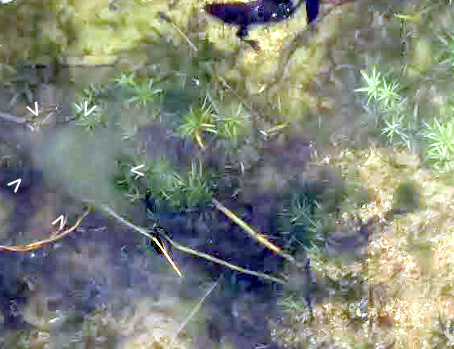Quote:
Originally Posted by BenLasher

An earlier poster asked about "white clouds on the water" and I admit I didn't pay much attention to the question. Then last weekend I spotted was looked like boat fenders floating out on the water and I had to go check them out. Fenders are expensive and I couldn't figure why there would be several floating unless there was some kind of accident.
Anyway, when I got close, I realized it was a white foam, or "white clouds" floating on the water. Then, this weekend I see "white clouds" forming on my beach, but I believe these are the normal result of light waves/ripples landing on the shoreline. And seeing the leaves attached to the clouds floating out on the water,
I assume that those clouds started on a beach and when the wind died, floated out into the water. I'm not proposing any monumental scientific discovery here, but just thought I would follow up with my "white cloud" experience.
|
• I don't think those "clouds" are anything to worry about. As you said, they collect on beaches (in late September) and when the wind dies after sunset, they gently float out away from shore.
One website I checked (25 years ago) says if the clouds smell like soap,
that's their origin. If they smell like "fresh dirt", then they're naturally-occurring. Although I'm not a limnologist, I suspect late-season agitation of decaying green algae filaments
forms—and reinforces—the filaments into "clouds".
• "Seeds" for blue-green algae float tapioca-like within 3-4 feet from the water's surface. They start appearing in late August. They're not the same "critter" as the various forms that green algae can take; in fact, blue-green "algae" is really bacteria.

• Green algae, on the other hand, has started appearing earlier and earlier in early Spring.
About 15 years ago, new McMansion got planted next door. Its new, wide, "footprint" caused a small rivulet to enlarge into a seasonal "babbling-brook". The McMansion also shares a leachfield with its older (and recently enlarged) neighbor. The sign of our local algae's earliest appearance (May) started in that now-engorged rivulet.
As the season warms, algae
spreads, starting with small bundles attached to lake vegetation.(Indicated on
left side of photo below). It breaks off with severe wake action, and rolls into a "tumbleweed" form where it invades deeper, but gradually warming, water. (Increasing to about the size of a volleyball).
